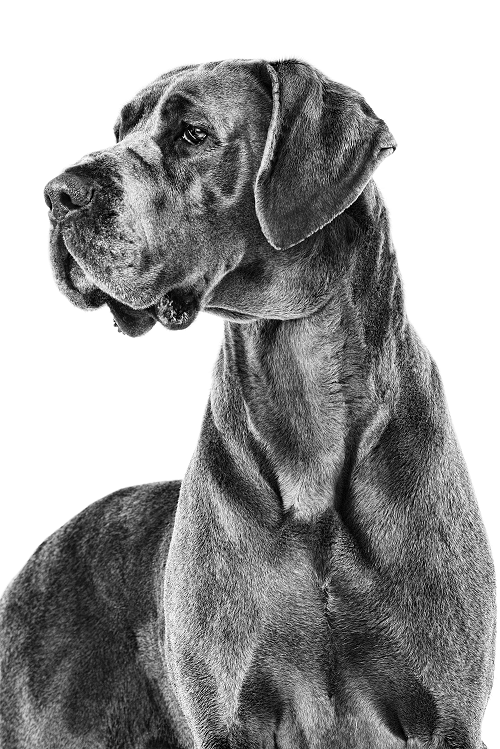Keeping Dogs in Shape – Top 5 Tips
Winter has arrived. Don’t forget it is still important to continue to keep your dog in good shape and to provide them with regular exercise. Keeping your pet in shape helps them to maintain a healthy weight and provides them with much needed mental and physical stimulation. Why not follow and share our top 5 tips to help keep your dog in great shape during the winter months?

- Feeding Guides
A feeding guide is just that, it is ONLY a guide which you will need to use as a baseline and then adapt to meet the needs of your pet. Some dogs will need to eat less than the guide states and some will need more. At ROYAL CANIN®, our feeding guides are based on how much to feed your pet over a 24 hour period. We would recommend you split this allowance into at least 2 meals per day (or potentially more depending on your retailer/vet’s advice and the age of your pet).
You also need to feed your pet the amount of food (in grams) corresponding to their body weight when they are at their ideal body condition (if you’re not sure of your dog’s ideal weight see our BCS video (below) for more information and ask your veterinary practice about weighing your pet). We would always recommend weighing your pet’s food out at every meal. Feeding in cup measurements is often inaccurate. Continue to monitor your pet’s weight and body condition every few weeks and adjust the amount you are feeding your dog accordingly until you are able to maintain them at a stable and healthy weight.
- Exercise
If the winter weather becomes extreme and you do find you have to reduce walks and regular exercise with your dog, please keep a close eye on your pet’s weight and body condition score and adjust their daily food allowance accordingly. Alternatively, consider other forms of exercise for your healthy, adult dogs; 2 or 3 daily sessions of active indoor play with your dog can make for great exercise and great fun!
- Body Condition Score
Most of you would expect that weighing your pet would be the best way to check whether they are in ‘tip-top’ condition, however, this is probably one of the least accurate methods unless it is combined with other techniques. A healthy weight for one dog may not be a healthy weight for another – and even within the same breed, healthy weights can vary greatly depending on the age, gender and underlying anatomy of the animal. One of the best systems available to use at home to assess whether or not your pet is the correct weight is the “body condition score” and it is easy for you to check your pet yourself. Why not watch our video to find out how to body condition score your dog yourself, or ask at your veterinary practice for their advice if you are unsure.
- Light Diets and Neutered Diets
For pets that are prone to weight gain, calorie restriction may worry you because your dog will probably still have a big appetite and it can be very difficult to see your pet looking hungry. This is why, at ROYAL CANIN®, we’ve developed our Light diets and our Neutered diets, which help to reduce your dog’s energy intake whilst still giving them a similar quantity of food (when compared to a regular maintenance feed).
We’ve increased the level of dietary fibre in the kibble and that helps your dog to feel full even when they are consuming fewer calories. If your dog needs to lose weight, we would always advise speaking to your veterinary practice for their advice before embarking your pet upon a weight-loss protocol. Our bags of food do carry easy-to-follow feeding guides and your vet will be able to guide you safely through these. Very overweight pets (those that need to lose more than about 10% of their current bodyweight to get back in shape) will need close veterinary supervision and usually will require a specific diet which their vet has recommended when going on a weight-loss regime. This helps to ensure their full nutritional needs are met (e.g. by providing enough vitamins and minerals) whilst their calories are very much restricted.
- Treats
At ROYAL CANIN®, whilst we understand that food rewards can be important for training your dog and to support the pet-owner bond, we also recognise that treats are not a necessary part of daily life for pets and could lead to unwelcome weight gain. In all cases treats or food supplements should never make up more than 10% of a pet’s daily calorific allowance and any calories gained through this additional method of feeding should be deducted from the pet’s daily meal allowance.
There are many other ways in which you can reward and stimulate your pet in place of using treats. For example, a pet may benefit more from environmental stimulation when being fed its regular meal (often referred to as ‘activity feeding’, such as using an interactive feeding bowl/ball) than it would from being fed a treat. Pets should always be supervised when they are being fed.
© ROYAL CANIN® SAS 2016. All rights reserved.